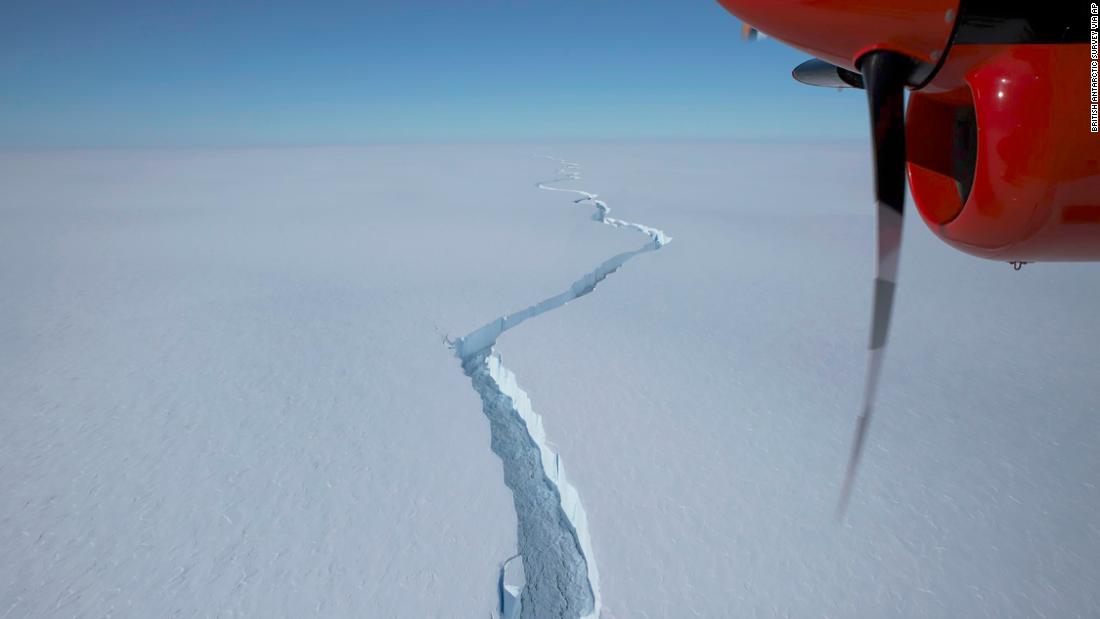
BAS’s Halley Research Station, located on the Brunt Ice Shelf, has been closed due to the Antarctic winter, and the 12-person staff departed earlier this month.
Scientists have been expecting for years that a large iceberg will break loose due to massive cracks formed in the 150-meter-thick floating ice shelf, the BAS said.
A new canyon known as the North Rift started moving to another large crack in November, growing by a mile a day in January.
Aerial video taken in mid-February shows the North Rift stretching as far as the eye can see.
The crack widened to several hundred meters on Friday morning, freeing it from the rest of the ice shelf, the BAS said.
She said they get daily ice shelf updates from an automated network of high-precision GPS instruments and satellite imagery.
“All data is sent back to Cambridge for analysis, so we know what happens, even in the Antarctic winter, when there are no staff at the station, it’s pitch black and the temperature drops below -50 degrees Celsius,” she said .
The BAS moved the Halley Research Station further inland in 2016 as a precaution, and staff have only worked there since 2017 during the Antarctic summer because evacuations would be difficult during the dark winter.
“This is a dynamic situation. Four years ago, we moved Halley Research Station inland to make sure it wouldn’t get carried away when an iceberg eventually formed. That was a wise decision,” said Simon Garrod, Director of Operations at BASS. “Our job now is to keep a close eye on the situation and assess the potential impact of the current calving on the remaining ice shelf.”
There have been six Halley Research Stations on the Brunt Ice Shelf since 1956 to conduct atmospheric and space weather observations.
The ice shelf flows towards the sea at a speed of about 2 kilometers per year and icebergs break off at irregular intervals.
“Ice change at Halley is a natural process and there is no link to calving on the Larsen C Ice Shelf, and no evidence that climate change has played a significant role,” the BAS said.
Scientists are now looking at the iceberg to see what it will do next.
“In the next few weeks or months, the iceberg could disappear; or it could get stuck and stay close to the Brunt Ice Shelf,” Francis said in the statement.
